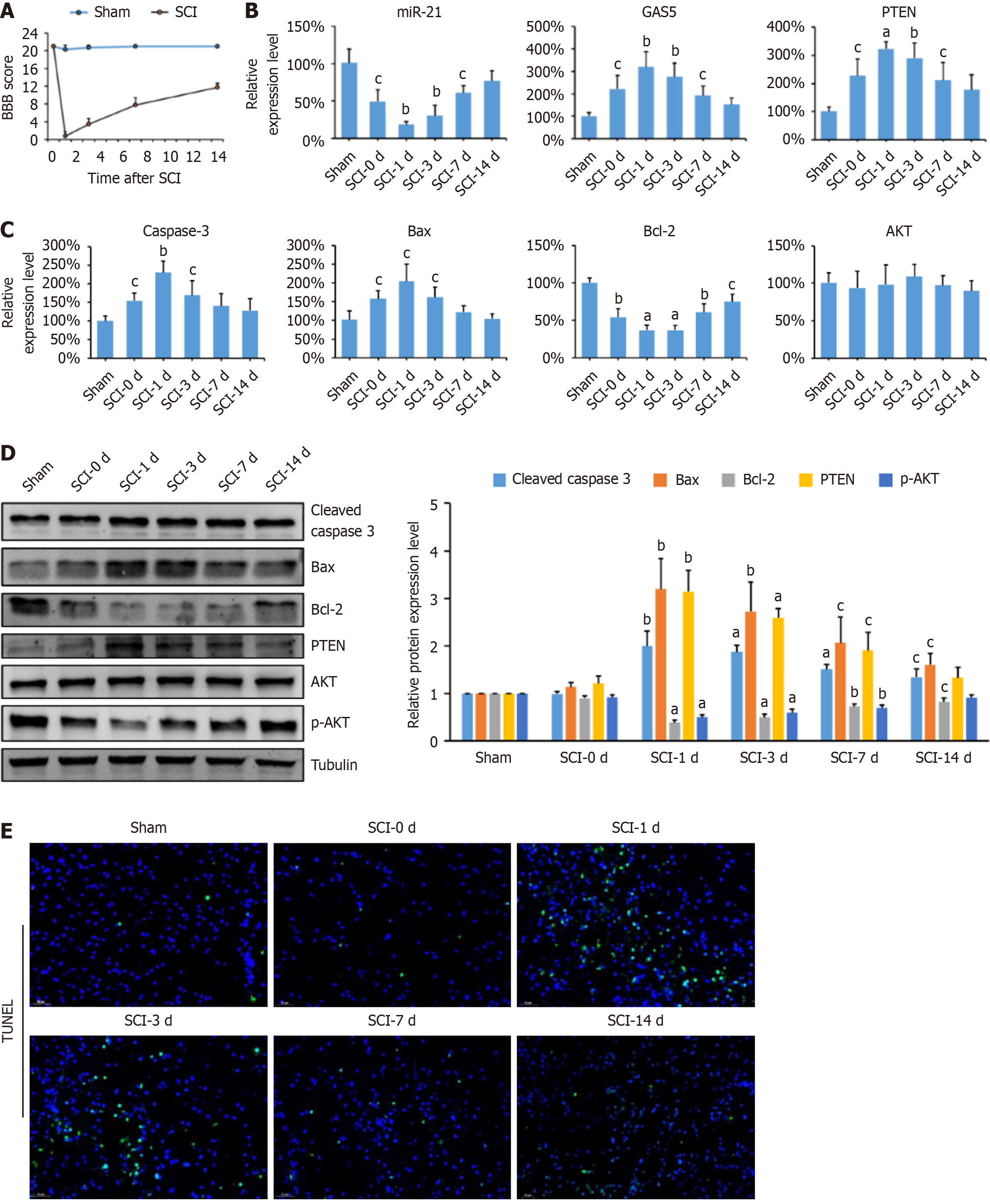Copyright
©The Author(s) 2025.
World J Orthop. May 18, 2025; 16(5): 106183
Published online May 18, 2025. doi: 10.5312/wjo.v16.i5.106183
Published online May 18, 2025. doi: 10.5312/wjo.v16.i5.106183
Figure 1 Upregulation of growth arrest-specific transcript 5 in spinal cord injury rats.
A: Basso, Beattie, and Bresnahan (BBB) scores for both the spinal cord injury (SCI) group and the sham group (n = 6 per group); B: Relative expression levels of microRNA (miR)-21, growth arrest-specific transcript 5, and phosphatase and tensin homolog (PTEN) in the spinal cord tissue of rats in the sham group and the SCI model group at different time points (n = 6 per group); C: Relative mRNA expression levels of caspase-3, B-cell lymphoma 2 (Bcl-2), Bcl-2-associated X protein (Bax), and AKT in the spinal cord tissue of rats in the sham group and the SCI model group (n = 6 per group); D: Protein expression of cleaved caspase-3, Bcl-2, Bax, PTEN, AKT, and phosphorylated AKT (p-AKT) in rat spinal cord tissues detected by western blotting, and protein bands were subjected to grayscale analysis using ImageJ followed by statistical analysis using GraphPad Prism 9.0. The endogenous control utilized was tubulin (n = 6 per group); E: TUNEL assay was used to identify apoptotic cells in rat spinal cord tissue. Data are presented as the mean ± SD. aP < 0.001, bP < 0.01, and cP < 0.05 compared to the sham group.
- Citation: Wang YJ, Zhi ZZ, Liu T, Kang J, Xu GH. Long non-coding RNA GAS5 promotes neuronal apoptosis in spinal cord injury via the miR-21/PTEN axis. World J Orthop 2025; 16(5): 106183
- URL: https://www.wjgnet.com/2218-5836/full/v16/i5/106183.htm
- DOI: https://dx.doi.org/10.5312/wjo.v16.i5.106183









